In the depths of suffering and distress, A Space for the Unbound offers a remarkable and moving narrative about rediscovering oneself.
Games with a realistic setting and plot are uncommon these days, so Indonesian company Mojiken comes along with A Space for the Unbound. It’s a pixel-art adventure that does a fantastic job of bringing you into the life of its characters. Set in a world reminiscent of the cities of inland Indonesia in the 1990s, the game follows a young man dealing with strange events that defy his rational comprehension.
At first glance, A Space for the Unbound seems like little more than an art-focused game design experiment. But it turns out to be a delight of the highest kind for adventure enthusiasts craving a pinch of suspense and drama in between moments of tranquility and nostalgia.
Even though work on the project didn’t start until 2015, the developers’ efforts have been worthwhile. A Space for the Unbound is an exploratory experience developed by Mojiken and published by Toge Productions that deals with the difficulties of conquering depressive disorders and anxiety.
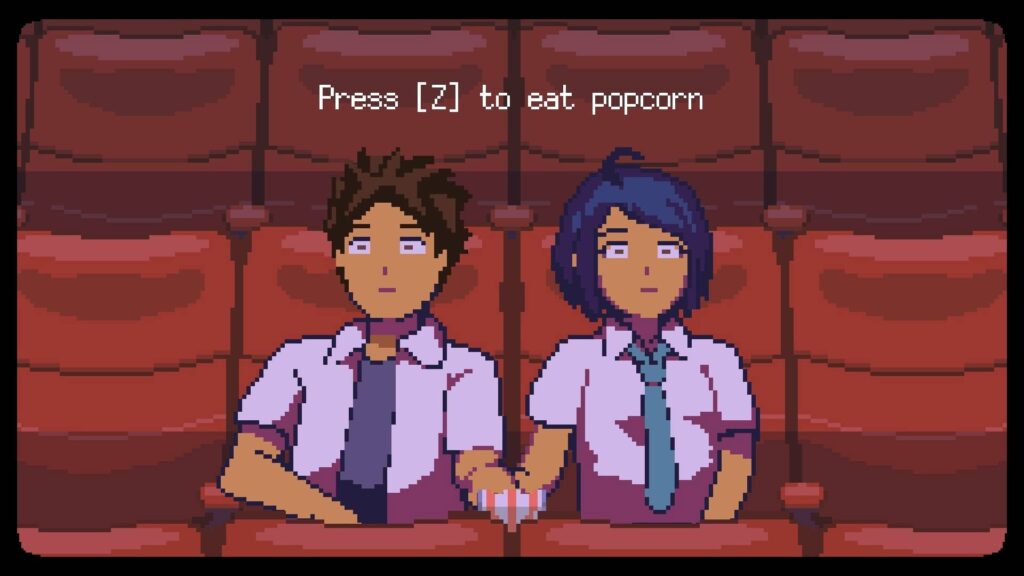
With its original premise, well-executed plot, beautiful visuals, and challenging puzzles, this game will stay in players’ minds long after they’ve put down the controller. Even though its fragmented gameplay disrupts the tale, it still takes players on an emotional coming-of-age journey while allowing them to reflect on how they handle similar situations with the people in their life or with themselves.
The protagonists of A Space for the Unbound are two high school students named Atma and Raya. In addition to their magical abilities, they deal with issues like anxiety and depression. In their third year at the local high school and on the cusp of adulthood, they want to make the most of the time they have left together before parting ways, so they write a to-do list in Atma’s strange red notebook.
Sadly, not everything is as it seems, and Atma soon realizes that strange incidents are happening in his immediate environment and that Raya is the key to understanding them. As the world around them begins to fracture, Atma joins with the other characters to devise a plan to rescue Raya from the unknown forces possessing her. Shortly after the prologue concludes, you understand the game’s potential depth.
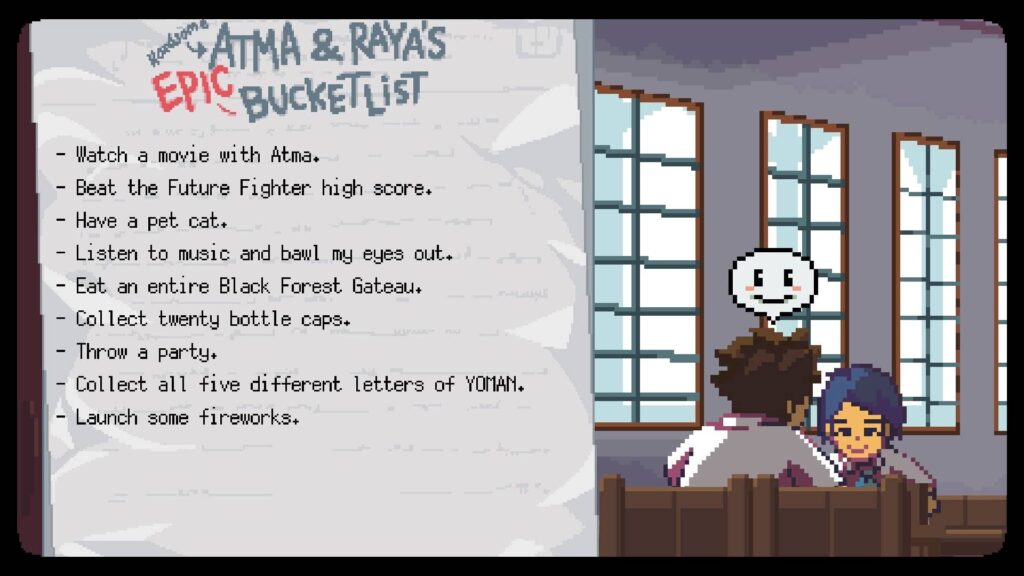
You take on the role of Atma, a typical high school senior who experiences a strange dream that feels very real and then finds himself in the middle of a classroom once he wakes up. The game rebounds from the earlier beat and returns to its joyful state. You’re encouraged to pet every cat you come across, engage in conversation with everybody, and scavenge for stuff to use in puzzles or keep as souvenirs.
Rare items can be found well out in the periphery; however, they often glow in the dark to draw attention. You engage in a harmless flirtation with other women, construct a cat shelter, and even encounter a bully, but something tells you that things are not quite as they seem. The plot soon takes a darker turn as Atma’s flights of imagination take the form of space diving, in which he utilizes a mystical book to delve into people’s minds and heal their problems.
Playing A Space for the Unbound is like playing a 2D adventure game with puzzle elements reminiscent of point-and-click adventures. You will spend most of the time wandering the city searching for objects you need to present to the appropriate individuals or bring about an inevitable occurrence. As Atma, you’ll be navigating a 2D environment, traveling between screens as you visit various locations around town. Getting around is as easy as it gets, with just a few instances of going up or down to enter different shops or areas of the map.

Talking to the residents is a great way to learn about the area’s culture. Numerous people, including street sellers, students, shopkeepers, and others, may approach you to engage in a brief conversation, which can help you feel more at home in your new environment. In any case, even with little dialogue, each individual is lovable, and the story succeeds in making the reader feel that they are an integral member of a tight-knit group.
A Space for the Unbound isn’t without its shortcomings, but it nevertheless provides a captivating plot with excellent pacing. The game’s core concern is that it becomes too fetch-quest-oriented for its good, at worst seeming like unneeded padding, as you stroll about the city collecting things that can be used to solve puzzles and advance the story. This is a notable issue since the game drags on for too long, taking up to twice the hours to complete, while the plot only warrants five hours at most.
Though this extra length doesn’t destroy the experience, it does become old toward the end. Despite this, the game’s surroundings and characters are a treat to discover since many of them have their own backstories and overarching storylines, even if they don’t play a significant role in the game’s narrative.
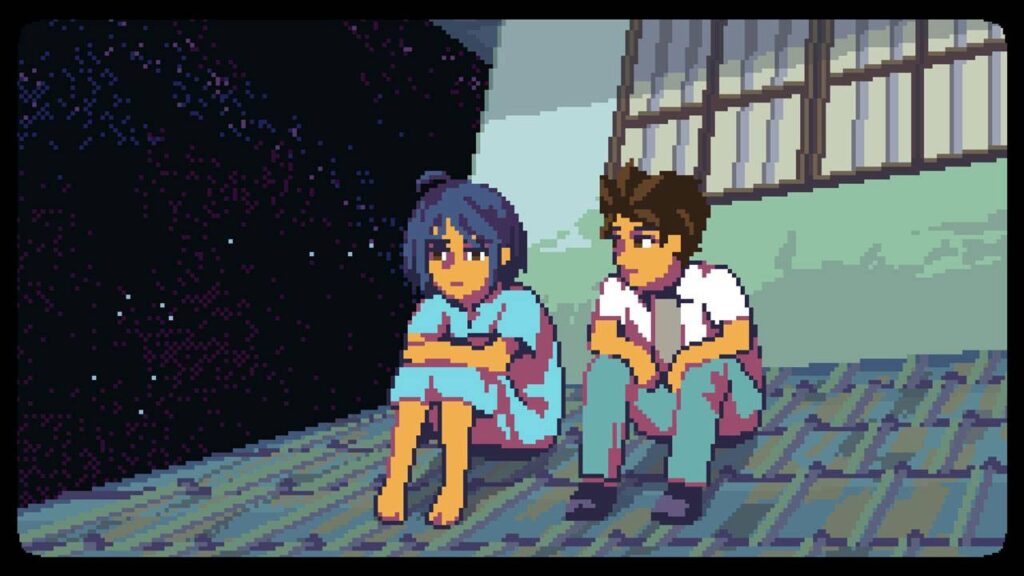
However, even with a small selection of items, the game has a lot to accomplish. Atma can freely explore the town in whatever way you choose, stopping to chat with locals and examining anything that catches your eye. For your navigational convenience, the game includes a map and a list of goals. Sometimes you’ll need to solve puzzles to progress, and you can use Atma’s magic book to dive into the minds of others to solve puzzles and progress through the game.
The difficulty level is appropriate, and the puzzles have a good mix of standard features and exciting creativity. There’s a robust fighting mode with button sequences for various situations, such as boss encounters with many waves. Additionally, there will be moments when you must use a stealth mechanism to proceed. Later in the tale, you obtain the power to time travel in a similar fashion, with your choices in one timeline having repercussions in another.
All the character designs in A Space for the Unbound felt right, even when many weren’t related to the main storyline. Everyone has distinct personalities and interesting concerns. Although many of them aren’t directly linked to the key happenings, they are all nonetheless connected conceptually. Space diving into their mind forces them to face new personal challenges, such as anxiety or childhood bullying. While doing so, you must reorganize a person’s thoughts by illuminating a path ahead in their unconscious mind.
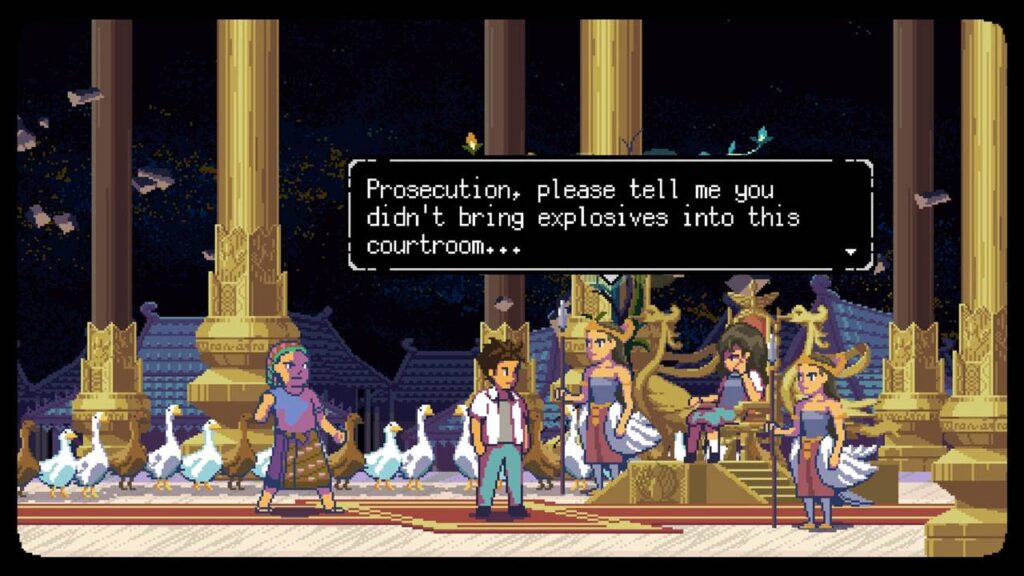
The ultimate aim is for them to alter their perspective on particular occurrences, individuals, or ideas. This approach can be felt in every little corner of the game, which is fitting given that the game is about conquering trauma by embracing the wonderful everyday things of life. Even if you don’t pick up on the message until the very end, having this overarching philosophy will make the whole thing that much more meaningful.
Outside of the standard movement and interaction features, A Space for the Unbound is more of a well-executed narrative. Thus, the gameplay soon becomes more passive since it focuses so much on its story. Its captivating pixel-art style gives off an atmosphere of comfort and familiarity, and the believable exchanges between the two protagonists soon connect with yours.
The game’s goal isn’t simply to have you care about the protagonists and their hardships; it’s to have you work through your own. The story and gameplay are used in such a subtle and authentic way that it’s impossible not to be caught in the game’s universe and imagine yourself there. Given its capacity to address the player with such a personal touch, A Space for the Unbound truly deserves overwhelming admiration.
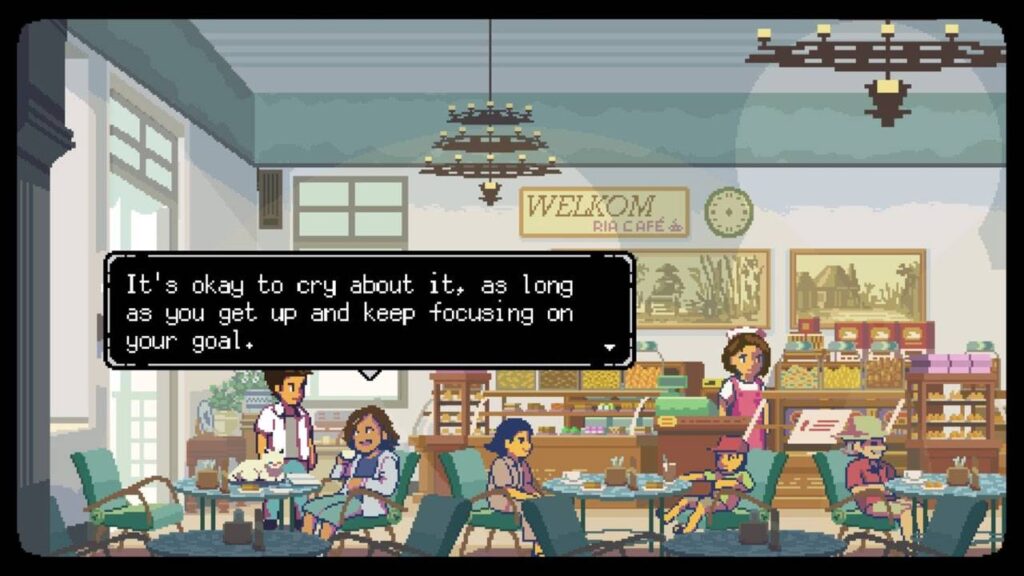
Apart from the captivating narrative, A Space for the Unbound’s success can be attributed partly to its distinctive pixel-art visual style. The game’s stunning display undoubtedly contributes to this. The clarity and depth of color in this game are unusual in other games made with pixel graphics. The structural layouts of the city and the figures are pretty appealing to the eye, and the color palette is lively.
In addition, the cutscenes are surprisingly impressive, considering the game’s small development team. The degree of detail on Atma, Raya, and most characters is incredible, particularly when they animate. Despite the lack of voice acting, the soundtracks will have you eager to go further. The music is often soft and emotional, adding to the ambiance.
A Space for the Unbound’s plot is excellent, and it’s satisfying to see each character grow throughout the game. The narrative may be straightforward at times, but it’s not without its share of surprises. Quests may range from simple tasks like locating someone to more involved ones like completing puzzles, side quests, or even doing math. The game’s puzzles are still reasonable and fun to solve. Its setting is sizable without being overwhelming, and it has plenty of intriguing things to do and see. As a pixel-art game, the presentation is rather outstanding.

In the depths of suffering and distress, A Space for the Unbound offers a remarkable and moving narrative about rediscovering oneself. The atmosphere, characters, and overall design are all imbued with such admiration for their subject matter that it is tangible right up to the very end, elevating the game to a unique experience. The game’s focus on simplicity and familiarity helps keep players interested throughout.
Its thoughtful narrative serves as a timely reminder of the necessity of making meaningful connections with other people via the words we choose to use. It may have some minor issues, but it features many positives for the players. Despite a few flaws, everyone should check out this title because of its compelling story and excellent visuals.















